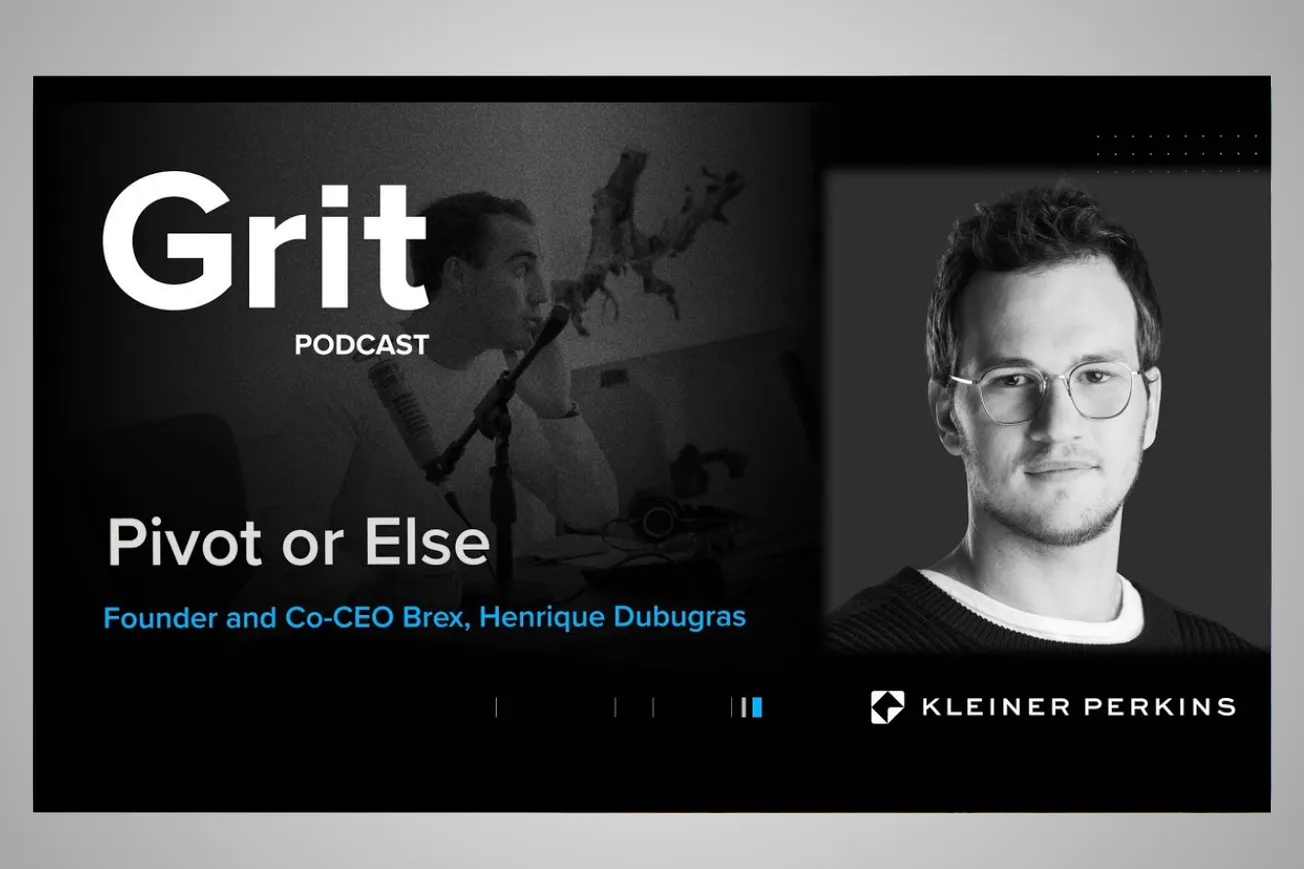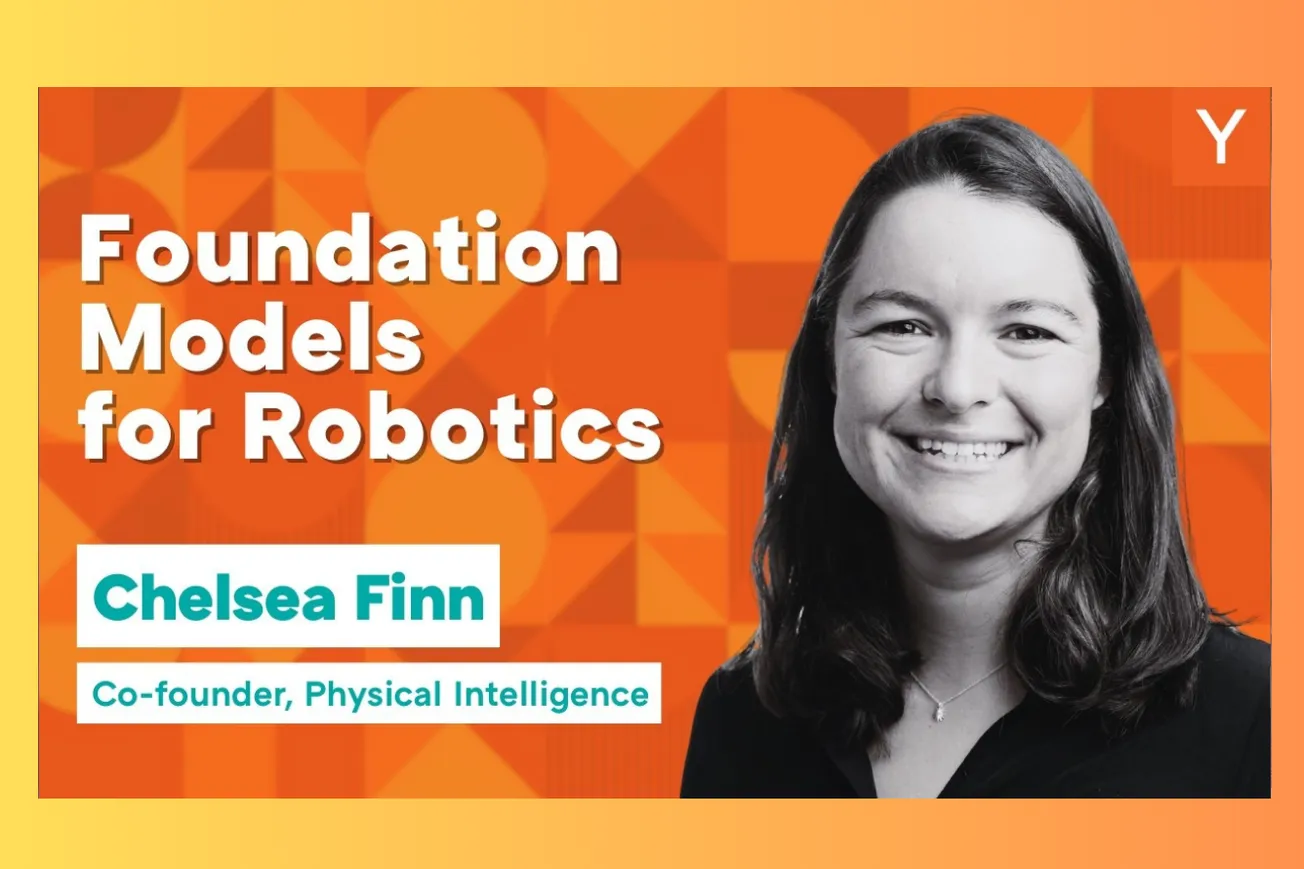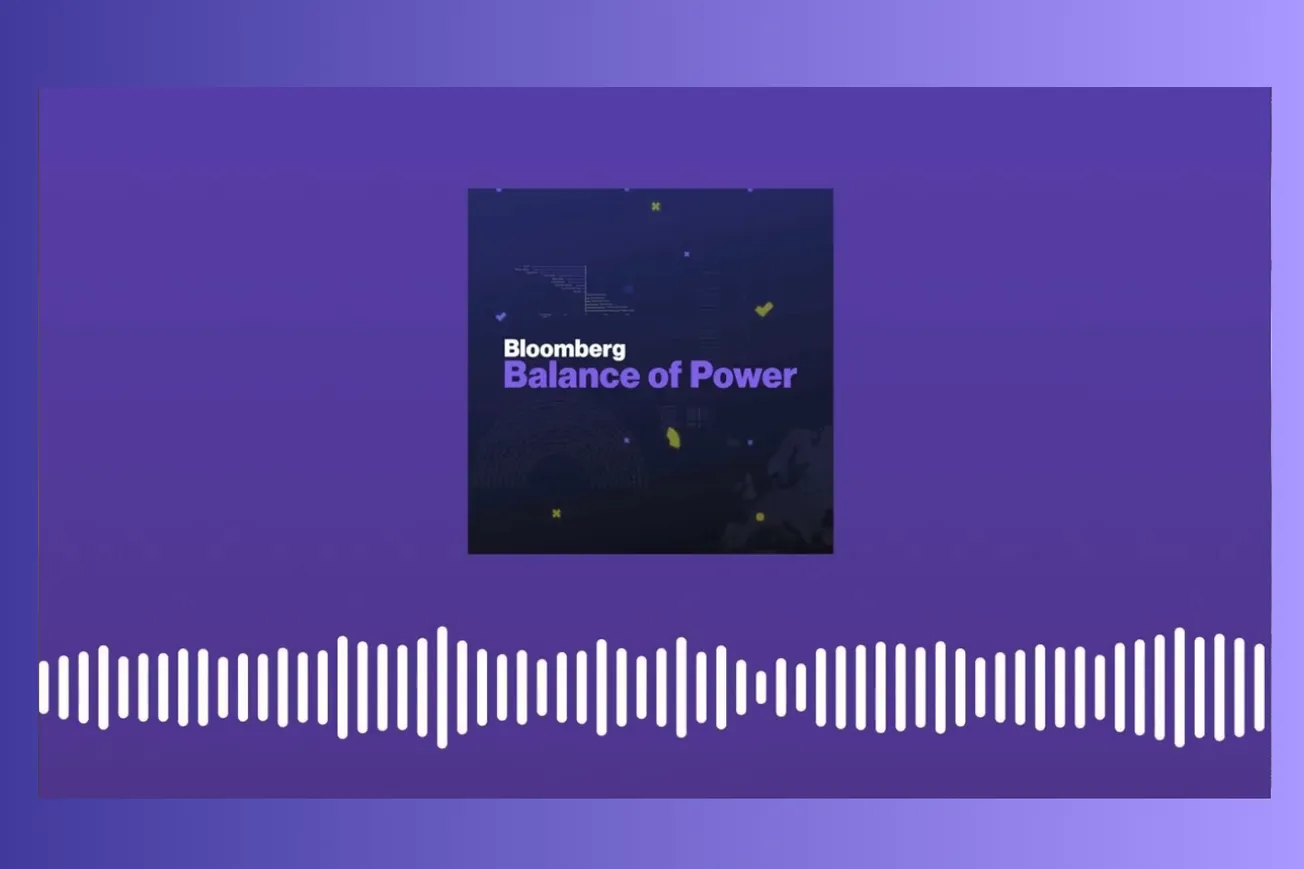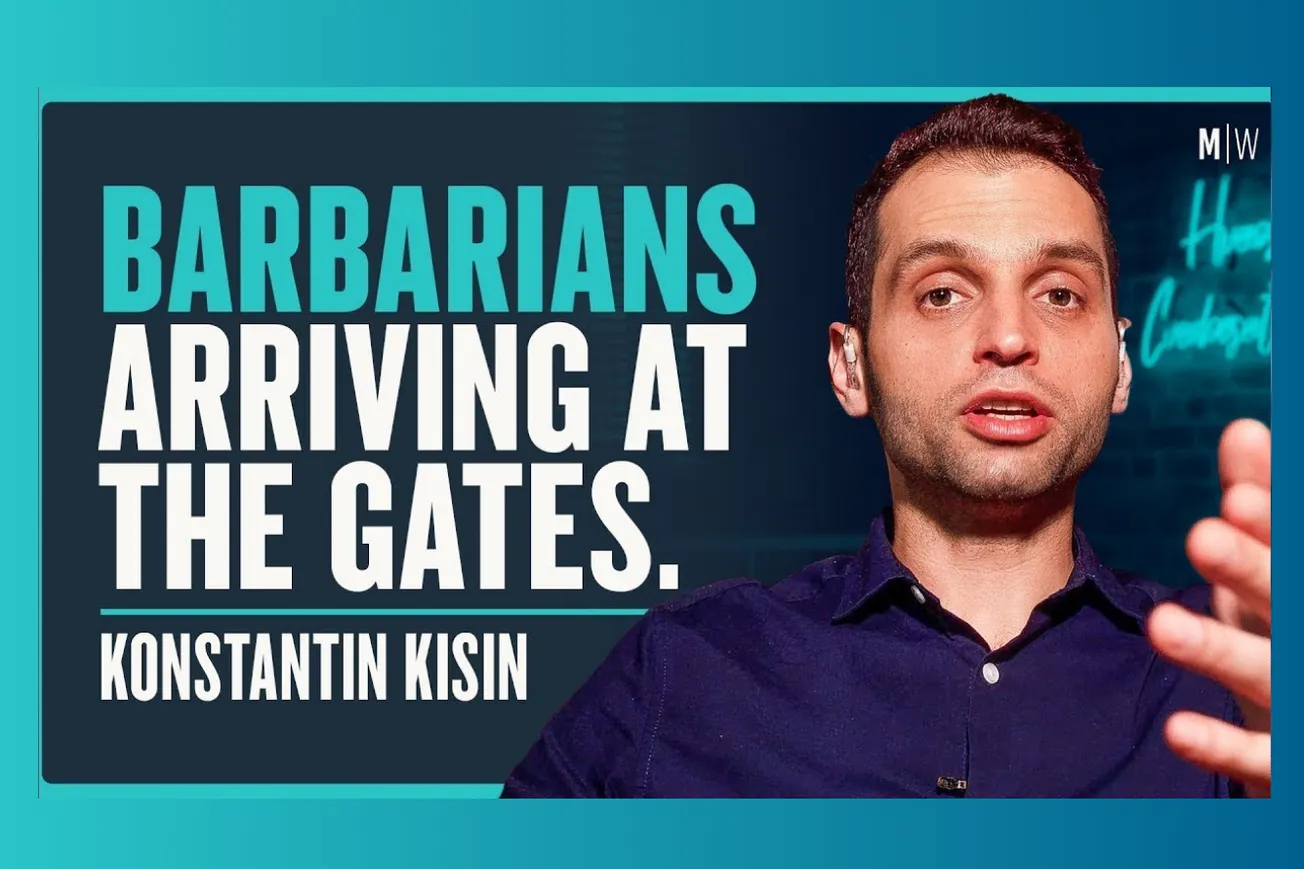Table of Contents
Henrique Dubugras reveals how authentic leadership, strategic pivots, and staying close to customers enabled Brex to navigate hypergrowth, market crashes, and a $12 billion company transformation.
Key Takeaways
- Authentic leadership requires building companies around your natural strengths rather than emulating other successful leaders—"if you try to emulate being Elon Musk and you're not like that, you're just gonna fail"
- Original motivations for starting companies often stem from unhealthy places like financial insecurity or proving doubters wrong, but these evolve into mission-driven purpose over time
- ADHD and perceived deficiencies can become superpowers when channeled correctly—impatience and inability to focus on unimportant tasks forces prioritization of what matters most
- Successful pivots at scale require returning to first principles and direct customer engagement rather than relying on market research or competitor analysis
- Compensation structures should eliminate artificial barriers to hiring great talent—Brex allows employees to choose their cash-to-equity ratio and eliminates recruiting fees
- The most valuable early hires operate effectively at both 10,000-foot strategy and 1,000-foot execution levels, justifying significant equity compensation
- Product-market fit can mask operational inefficiencies for extended periods, making it critical to separate core business success from peripheral initiative failures
- Enterprise software transformation requires fundamentally different go-to-market approaches than fintech products, demanding new skill sets and organizational capabilities
- Hypergrowth periods often lead to pursuing too many initiatives simultaneously—sequential execution generally outperforms parallel expansion attempts
Timeline Overview
- 00:00–07:11 — Growing Up and Early Rebellion: Henrique's emancipation at 16 after conflicts with his labor judge mother over entrepreneurship, winning hackathons to survive financially
- 07:11–15:56 — Building Pagar.me and Hacker Fame: Meeting co-founder Pedro through Twitter debates, scaling Brazil's "Stripe" to billions in transaction volume, selling at 20 years old
- 15:56–24:40 — Authenticity and ADHD Superpowers: Discovering ADHD medication trade-offs, embracing natural impatience as competitive advantage, rejecting Silicon Valley conformity expectations
- 24:40–34:07 — Brex's Hypergrowth and Correction: Navigating 2019 success, COVID impact, pursuing too many initiatives simultaneously, learning to focus sequentially rather than parallel
- 34:07–43:33 — Compensation Innovation and Early Hiring: Eliminating recruiting fees, allowing cash-equity choice, recruiting exceptional talent through generous equity and authentic value alignment
- 43:33–END — The $12B Pivot Decision: Exiting small business segment, focusing on core startup customers, building enterprise spend management, transforming from fintech to enterprise software
The Fire of Emancipation: When Family Conflict Breeds Entrepreneurial Drive
At 16, Henrique Dubugras faced an ultimatum from his labor judge mother in Brazil: pursue traditional education and career paths, or support himself financially. Her message was stark: "if you're adult enough to make your own decisions, you need to go support yourself." This moment of family breakdown became the catalyst for extraordinary entrepreneurial drive.
- Authentic motivation origins: "My original motivation was I wanted to get rich because I want to pay my bills so I don't have to go back to my mom"
- Financial survival pressure: Running out of money led to betting everything on a $50,000 Miami hackathon with friends, building a Facebook-based dating app
- Family reconciliation timeline: Years of estrangement followed by gradual relationship repair—"we didn't talk much for a few years and then I would say we started getting closer maybe two years ago"
- Success validation threshold: The turning point came "when we sold my first company that actual dollars came in" rather than through external recognition or achievements
- Achievement-oriented upbringing: Despite conflict, his mother provided analytical training through dinner table discussions about school situations and moral reasoning
The contrast between family expectations and entrepreneurial reality created the internal tension that would fuel years of relentless building and growth.
Hacker Fame and the Pedro Partnership
The meeting between Henrique and Pedro Franceschi reads like Silicon Valley mythology—two teenage prodigies connecting over Twitter arguments about text editors (Vim versus Emacs). Pedro's reputation preceded him: worldwide "hacker famous" for discovering the first iPhone 3G jailbreak at age 12, an achievement that typically emerged from China or Russia.
- Technical credibility establishment: Pedro "started coding when he was nine, when he was 12 he found the first jailbreak for the iPhone 3G in the world"
- Relationship foundation building: From Twitter debates to Skype conversations to "best friends" who "decided to start programming together"
- Complementary skill recognition: "Even though I had a big ego, I knew very instinctively that the only way to be very successful is by having the smartest people around me"
- Deference over ego: "The deference definitely spoke a lot higher than my ego" when working with exceptional talent
- 12-year partnership durability: Their collaboration has sustained through multiple companies and business model transformations
This partnership model—ego balanced by recognition of complementary strengths—became foundational to Brex's later success in attracting and retaining exceptional talent.
The ADHD Revelation: When Deficiencies Become Superpowers
Dubugras' discovery of his ADHD at Stanford led to a profound insight about the relationship between perceived weaknesses and competitive advantages. The Adderall experiment initially felt like a "superpower"—reading 17 books in four months after barely reading any previously. But the medication came with unexpected costs.
- Attention trade-offs revealed: "When I was connecting and talking to someone or selling someone when I was on Adderall, my head was thinking about five different things... when I was me I was fully present"
- Focus as competitive advantage: "A lot of the superpowers that had gotten me so far was this fact that not spending time on things that I didn't want to made me focus on only the most important things"
- Authenticity preservation: "A lot of what got me to where I am today is because of my deficiencies and not in spite of them"
- CEO adaptation strategies: "If I know that I'm impatient, I know the settings in which I'm useful but I also notice there are settings in which I'm not helpful"
- Organizational design around strengths: Building company structures that leverage natural tendencies rather than fighting against them
The insight extends beyond personal optimization to organizational design—successful leaders build systems that amplify their authentic strengths rather than trying to conform to external expectations.
Breaking the Silicon Valley Mold: Authenticity Over Conformity
Evan Spiegel's advice to "be 120% version of you" challenged Dubugras to reject Silicon Valley's implicit conformity pressures. The revelation that he didn't need to pretend to love reading books or fit the stereotypical CEO profile became liberating for both personal development and organizational culture.
- Impostor syndrome sources: "I always thought I was like I can't tell this to anyone because who's going to want to work for a guy who doesn't read books"
- Performance pressure reality: "As a CEO you're proving yourself all the time... you feel like you need to be a version of you that they would buy"
- Silicon Valley stereotypes acknowledged: "We definitely got leverage of it... Stanford dropouts that know how to code... I can't think of anything more stereotypical"
- Authenticity permission giving: Recognizing that many successful founders started with "fucked up motivation" rather than pure mission orientation
- Organizational permission structures: Creating environments where team members can also be authentic rather than performing expected roles
The shift from performance to authenticity enabled more effective leadership by allowing focus on genuine strengths rather than energy-draining role-playing.
The Hypergrowth Trap: When Success Breeds Overexpansion
Brex's 2019 success—growing revenue from $10 million to $100 million in one year—created dangerous overconfidence. The company's strong product-market fit in corporate credit cards masked the dysfunction of pursuing too many initiatives simultaneously.
- Overconfidence catalyst: "We had such success in our first product that we thought everything else we ever did was gonna work"
- Resource allocation errors: "We did too many things... hired too many people to do too many things... how many different priorities we had"
- Masking effect analysis: "Such strong product-market fit... made so that even if we were fucking up a bunch of other stuff it still worked"
- External perception disconnect: "Sometimes I get VCs that give advice to founders about Brex and they're like 'look at what Brex did that was right' and I was like 'no no that's the part we fucked up'"
- Sequential versus parallel execution: "Do things sequentially instead of parallelize... that's the main lesson"
The lesson reveals a crucial scaling insight: product-market fit strength can hide operational weaknesses for extended periods, making disciplined focus even more critical during successful phases.
The $12 Billion Pivot: Choosing Core Over Growth
The decision to pivot a $12 billion company represents one of the most dramatic strategic shifts in startup history. After raising significant funding for small business expansion, Dubugras and Pedro discovered their core startup customers had different needs than the small businesses they were acquiring at scale.
- Customer feedback reality: "The small businesses that we were serving... what they really wanted was capital like lending" while core startups said "if you don't build all this stuff that I need as I grow I'm gonna leave"
- Market dynamics pressure: "There's like five different people trying to do what you're doing" in the core startup space, demanding product evolution
- Resource allocation crisis: Small business segment "takes so much of our resources and effort and mind share" while requiring fundamentally different infrastructure
- Strategic courage requirement: "We needed to make the hard decision... shut down these customers and it's going to be painful"
- Market opportunity expansion: Serving growing startups revealed similarity to "entire mid-market enterprise industry" with finance departments and procurement processes
The pivot required abandoning 60,000 customers to serve core customers better—a decision that demanded both analytical clarity and emotional courage.
Enterprise Transformation: From Fintech to Software
The shift from credit cards to spend management software required completely different organizational capabilities. Instead of simple product adoption, Brex had to master complex sales cycles, implementation processes, and ongoing customer success management.
- Product positioning evolution: Moving from "easy adoption" credit cards to solving compliance problems that finance teams struggled with for years
- Customer insight discovery: "People just don't do what they're supposed to do... they just don't do what they need to do" despite having policies and systems
- Behavioral design focus: "Employees do it if it's easy... employees are not trying to not comply... it's just hard"
- Implementation innovation: Automated receipt capture, policy-exception-only review systems, and manager workflow optimization
- Go-to-market complexity: "All these complex go-to-market issues... implementation and contracting and customization" versus straightforward credit card sales
The transformation from "selling credit cards is so easy" to mastering enterprise software complexity required entirely new skill sets and organizational structures.
Compensation Philosophy: Eliminating Artificial Barriers
Brex's approach to compensation reflects deeper principles about talent acquisition and organizational design. Rather than following conventional wisdom about equity versus cash preferences, they tested assumptions and built systems around actual employee needs.
- Recruiting fee elimination: "That money is going to come out of somewhere. I'd rather just pay that to the people... if you're good you're worth every dollar"
- Cash-equity flexibility: Employees choose their compensation mix based on personal financial situations rather than company-imposed ratios
- Performance correlation analysis: "People who pick 90% cash perform worse, people who picked minimum equity perform better, but in the vast majority in the middle there's absolutely no correlation"
- Age-based patterns: Younger employees typically choose more equity while older employees with mortgages and family obligations prefer cash
- Talent investment philosophy: "Let's hire the best people... if you're bad we just need to get rid of you fast"
Conclusion
The system recognizes that artificial constraints often prevent companies from accessing the best talent for arbitrary reasons unrelated to performance potential.
Henrique Dubugras' journey from emancipated teenager to $12 billion company CEO demonstrates that authentic leadership emerges from embracing rather than hiding personal characteristics that society might view as deficiencies. His experience shows that successful entrepreneurs often start with unhealthy motivations but evolve toward mission-driven purpose through the crucible of building and scaling organizations. The key insight: sustainable success comes from building companies around your authentic strengths while hiring exceptional people to complement your weaknesses.
Practical Implications
- Embrace authentic deficiencies: Identify personal characteristics others view as weaknesses and explore how they might be competitive advantages in specific contexts
- Build organizations around founder strengths: Design company structures, processes, and cultures that amplify natural tendencies rather than forcing conformity to external expectations
- Sequential execution over parallel expansion: Focus on mastering one initiative completely before launching additional projects, especially during hypergrowth periods
- Return to customer fundamentals during pivots: When facing strategic decisions, invest heavily in direct customer conversations rather than relying on market research or competitive analysis
- Eliminate artificial talent barriers: Remove compensation structures, title restrictions, or cultural expectations that prevent access to exceptional people for arbitrary reasons
- Separate core business health from peripheral initiatives: Regularly assess whether strong product-market fit is masking operational dysfunction in other areas
- Invest heavily in early exceptional hires: Provide significant equity and responsibility to early employees who can operate at both strategic and execution levels
- Plan for motivation evolution: Expect initial entrepreneurial drivers to evolve over time and build systems that can adapt to changing personal and organizational purpose
- Test compensation assumptions with data: Rather than following industry conventional wisdom, experiment with compensation structures and measure actual correlation with performance





